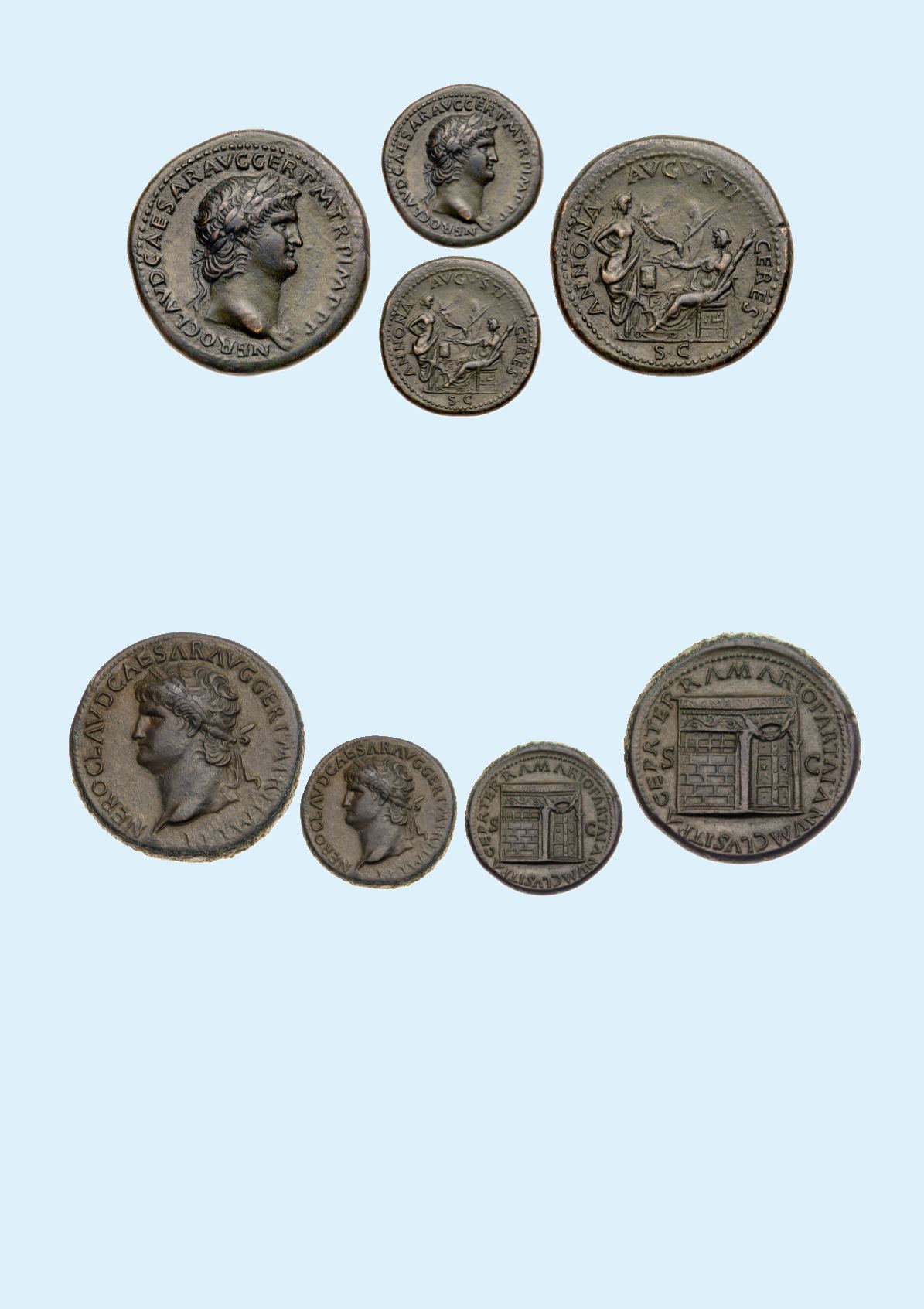

441
Nero. Æ Sestertius (32.17 g), AD 54-68. Rome, ca. AD 64. NERO CLAVD CAESAR AVG GER P M
TR P IMP P P, laureate head of Nero right, aegis at neck. Rev. ANNONA AVGVSTI CERES, S C in
exergue, Annona standing right, holding cornucopiae, facing Ceres seated left, holding grain ears and
torch; between them, modius set on altar and ship’s stern. RIC 137; cf. BN 278 (without aegis); WCN 119;
BMC 127. Glossy dark chocolate brown patina. Fields have been lightly smoothed, nonetheless a very
handsome specimen. Choice Extremely Fine.
$3,000
From the Dr. Patrick Tan Collection
Ex Berk 130 (6 January 2003), 708.
442
Nero. Æ Sestertius (26.09 g), AD 54-68. Lugdunum, ca. AD 65. NERO CLAVD CAESAR AVG GER P
M TR P IMP P P, laureate head of Nero left, globe at point of neck. Rev. PACE P R TERRA MARIQ
PARTA IANVM CLVSIT, S C across field, view of one side of the temple of Janus with latticed windows
to left and garland hung across closed double doors to right. RIC 439; WCN 426; Lyon 117; BN -; BMC
320. Lovely even chocolate brown patina. Light smoothing in the fields. Removed from an NGC slab
where graded Ch AU; Strike: 5/5, Surface: 4/5. Fine style, lt smoothing.
$2,000
From the Dr. Patrick Tan Collection.
The reverse legend proclaims that Nero “closed the doors of [the Temple of] Janus with the peace of the Roman people
throughout the land and sea” while the reverse type illustrates the temple with its doors closed. Janus was the Roman god of
beginnings and endings whose dual aspect was usually indicated by his depiction with two faces. The doors to his temple were
traditionally opened to signify declarations of war and closed to indicate the end of hostilities. However, the vastness of the
Roman empire and the numbers of enemies on its borders made it a very rare occasion when the doors of the Temple of Janus
were closed. Nero’s closure of the doors is usually associated with the successful campaigns of his general Cn. Domitius Cor-
bulo in the East and the reassertion of Roman influence in Armenia on the border with the Parthian Empire. It is deeply ironic
that in the year after Nero celebrated the closure of the doors of Janus the great and bloody Jewish Revolt broke out, showing
that peace was indeed a rare commodity in the Roman Empire.



















